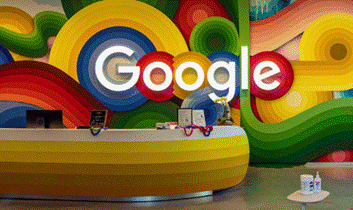Many
Huawei users report that Google services like Play Store, Gmail, and huawei google not working. The reason lies in U.S. sanctions imposed in mid‑2019.
New Huawei smartphones released after that cut‑off date no longer come with
Google Mobile Services (GMS). Without GMS, Google apps cannot install, update,
or function correctly. Understanding the causes helps Huawei users adapt and
find reliable alternatives. This article explains why Google apps stopped
working on Huawei devices and outlines how to regain access using browser
tools, Huawei alternatives, or third-party workarounds.
Core Reasons
Google Services Fail on Huawei
Lack of Google
Mobile Services (GMS) Certification
Google
Mobile Services is a suite of system-level libraries and apps that include Play
Store, Play Services, Gmail, Maps, and more. Huawei devices sold since May 2019
no longer receive GMS certification. They run HarmonyOS or EMUI without
official Google integration. As a result, Google apps fail to install or crash
because the required libraries are missing. Even if users install APK files
manually, services like push notifications, Google login, or location-based
features remain non-functional. Apps depending on GMS simply cannot operate
without the proper underlying framework, which Huawei no longer includes.

Security
Restrictions and Firmware Controls
Huawei
devices block the unauthorized installation of critical system components
required by Google. Even if users try to sideload Play Services via APKs, the
device often prevents installation due to signature checks and locked system
partitions. Firmware updates can remove or corrupt such hack-based
installations. Additionally, Huawei’s newer processors and kernels lack hooks
that enable low-level services like Google location tracking or push
infrastructure. These security measures ensure that unofficial installs remain
unstable and unsupported.
Ongoing
Removal via Software Updates
Even
if a workaround succeeds temporarily, future firmware or OS updates may remove
or disable GMS components. Huawei updates often patch known exploits or
reverse-engineered methods, so Google apps stop working after an update. This
creates a fragile setup for users relying on unofficial workarounds. Each
update may restore system integrity at the expense of compromised app
installations. Users should expect instability or loss of functionality after
major OS upgrades if using sideloaded Google apps.
How Users Can
Adapt Without Official Google
Use
Browser-Based Google Services
A
safe and reliable alternative is using Google services through the browser.
Gmail, Drive, Maps, and YouTube function fully via any web browser like Huawei
Browser, Chrome, or Firefox. Bookmark the mobile versions or install them as
Progressive Web Apps (PWAs) for quick access. This method avoids installation
issues and remains compatible with all updates. It lacks push notifications but
provides full functionality. For example, YouTube streams smoothly in-browser,
and Google Maps supports navigation.
Virtual
Workarounds like GSpace
GSpace
and similar apps create a simulated environment that mimics GMS. Within this
virtual space, users install and run Google apps like Gmail or YouTube. It
relies on emulator-like technology to run GMS inside a container without
rooting. Not all apps work reliably. Notifications may be delayed, and battery
consumption may increase. Still, GSpace offers near-native app access without
modifying system files. It’s a stronger option for users who seek app
interfaces rather than browser experiences.
Use Trusted
Third‑Party App Stores When Needed
If
specific apps aren't on AppGallery, you can use verified third-party stores
like APKPure, Aptoide, or Amazon Appstore. These platforms allow installation
without GMS. Always download from official sources and scan APKs for safety. You
may get access to banking apps, games, or productivity tools missing from
AppGallery. Stick with reputable stores only and use mobile security tools to
avoid malware. This method expands app access safely while sidestepping
reliance on Google.

Conclusion
Google
services stop working on Huawei devices due to the removal of Google Mobile
Services certification and the lack of deep system integration. Security
controls, firmware updates, and unsigned system partitions prevent GMS from
functioning even when sideloaded. Newer Huawei devices cannot run Google apps
natively. Choose the method that fits your needs and comfort level. Using
browser access and Huawei-native tools ensures stable and secure operation.
GSpace suits users who prefer app-based interaction. Third-party stores add
flexibility. By adapting to official alternatives and using trustworthy tools,
you can manage Huawei devices confidently—even without Google.
